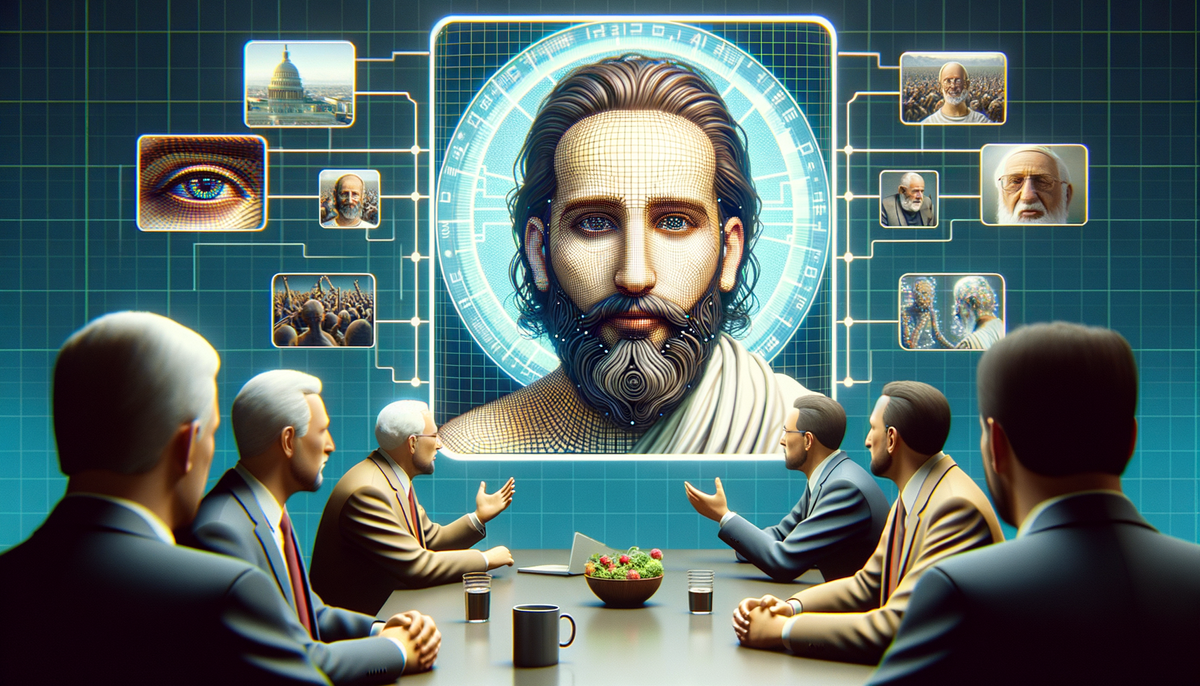Did Trump Post Pope Picture?
Explore the controversy behind Trump's AI-generated pope image and its implications on AI ethics and cultural sensitivity in media.

Did Trump Post Pope Picture?
In a surprising and controversial development, President Donald Trump posted an AI-generated image of himself dressed as the pope on his Truth Social platform on Friday, May 2, 2025. This incident has sparked a widespread debate and drawn significant attention both in the United States and internationally.
Trump's AI-generated Pope Image: Context and Reactions
The image depicts Trump wearing a white cassock and a pointed miter, commonly known as a bishop's hat. The timing of this post has added to the controversy. It was released during a sensitive period for the Catholic Church, as Pope Francis had died recently on April 21, 2025, which was Easter Monday. The Church was still observing the official nine-day mourning period, with Catholic cardinals conducting daily Masses in the late pope's memory. Furthermore, the conclave to elect the new pope is scheduled to begin on Wednesday, May 7, 2025.
For more on the context and initial reporting, readers can refer to detailed coverage by Variety and Reuters.
Background and Trump's Comments
This AI-generated image follows Trump's earlier remarks about the vacant papacy. When queried by reporters at the White House about his preference for the next pope, Trump humorously commented, "I'd like to be pope. That would be my number one choice." This image is seen as a continuation of that jest.
Public and Official Reactions
The image has been met with significant backlash. Italian and Spanish news outlets have characterized it as being in poor taste, particularly offensive given the ongoing mourning period for Pope Francis. An Italian publication even described Trump's actions as showcasing "pathological megalomania." Similarly, Michael Steele, the former chair of the Republican National Committee, opined that this was "evidence that Trump was unserious and incapable." Many devout Catholics and religious observers worldwide have found the image disrespectful during a time of mourning. Furthermore, some users on Truth Social criticized the post as sacrilegious and a catalyst for misinformation.
Diverse perspectives are also mentioned by Politico, which reported that Vice President JD Vance defended Trump's post, despite specific details of his defense not being revealed in the media.
Analyzing the Impact on Social Media
The AI-generated image has become a divisive topic across social media platforms, with opinions split between Trump's supporters and detractors. This polarization underscores the broader conversations about AI use in media and its implications, particularly in sensitive contexts.
Practical Takeaways and Industry Insights
For professionals navigating the intersection of AI and media, this situation offers several actionable insights:
- Consider the cultural and timing aspects when deploying AI-generated content, especially in contexts involving significant public sentiment or mourning periods.
- Engage with AI ethically by assessing the potential impact and public reception.
- Develop clear guidelines and policies for using AI in communications and public relations.
Our team at Newsomix excels in providing expert analysis on such AI and media interactions, helping businesses anticipate risks and leverage technology ethically.
Call to Action
Interested in learning more about navigating the complexities of AI in media? Explore our comprehensive resources and expert insights at Newsomix to stay ahead in this evolving landscape. Connect with us today to enhance your strategies in AI-driven communications.
The discussion around Trump's AI-generated pope picture serves as a profound example of the delicate balance between innovation and cultural sensitivity, highlighting the crucial role of informed decision-making in media and communications.




